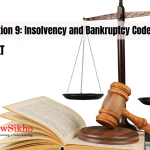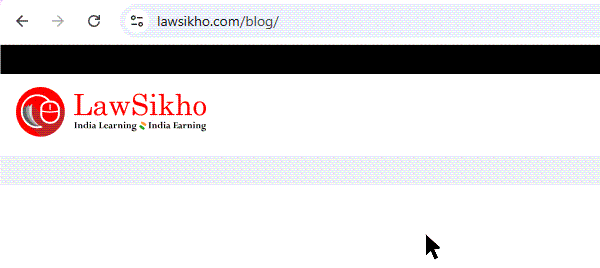Have you invented something new? What should you do next? This is where a patent comes in. If you are wondering what you need to do after inventing something, this article is for you. If you want guidance on how to apply for a patent, then I have got you covered.
Table of Contents
Introduction
A few years back, I worked with a client, and he was also a friend. He was an engineer. When I met him for the first time, he was in the process of creating something really cool. And within six months’ time, he had done it. I told him that I believed his invention was going to change the world, and so did he.
And honestly, it might have, but here’s the thing, he did not file a patent. He told me that he wanted to, but he thought it was a big process. He didn’t want to go through that, and he didn’t know where to start. I wish I could go back in time and help him with what I know now. But I unfortunately cannot do that, so I will help you.
As a lawyer, you are not just a legal expert. You are a guide. Your clients trust you to navigate the maze of patent law so they can focus on what they do best, which is creating. But I know that patent law isn’t exactly straightforward. It can seem a little complicated. It’s also a little dense, which means you might struggle to navigate.
But today I am going to make your life easier. I have a feeling a few of you out there have been putting off filing a patent altogether because it’s complicated. Let me tell you, it is not at all complicated, not as much as you think it is anyway.
It does not matter if you are new to patent law or just looking for a refresher; I will walk you through the process step by step. From understanding what makes an idea patentable to drafting airtight claims, we’ll cover it all.
By the end, you will maybe feel confident tackling even the most complex patent applications. And your clients will definitely thank you for protecting their genius.
Patents
Okay, let’s try and refresh our memory of law school. We did study this right, so what exactly is a patent?
It is essentially a legal right granted by the government to a person who creates something new and unique, and this could be me, you, your friend, or basically anybody. So, if I make a patented product tomorrow, this will be exclusive rights to what is fully mine because I invented it. This also means that no one else can make use of the product and sell it without my permission in the first place because I am the creator of the product. I think the whole concept sounds powerful.
In India, patents are governed by the Patents Act, 1970, and the Patents Rules, 2003. Like so many other laws, the patent law has also evolved over the years, but the core idea remains the same, which is basically to protect innovation.
The legal definition
In India, patents are governed by the Patents Act, 1970, so let us look at the official definition straight from the Act:
Section 2(1)(j) defines an invention and it says:
“A new product or process involving an inventive step and capable of industrial application.”
According to WIPO:
“A patent is an exclusive right granted for an invention. Patents benefit inventors by providing them with legal protection of their inventions. However, patents also benefit the society by providing public access to technical information about these inventions, and thus accelerating innovation.”
Patent requirements
Now, I am not sure if you remember, but not everything can be patented. Any invention, including your client’s invention, needs to meet three key criteria, which are:
Novelty
I can tell you that there is no room for debate here, the invention has to be new. Like, really new. If someone else has already thought of it, it is a no-go. You have to understand that it cannot be something already in the market and already existing, because that would defeat the whole purpose of this. The novelty element of the innovation is a must.
Non-obviousness
It cannot be something that is just an obvious improvement. There needs to be an inventive step. If you are an expert in a field, a new innovation in front of you should be something which has never crossed your mind. It cannot be something that makes you think that it is not anything special.
Utility
It has to actually work. No patent for something that is just a cool idea but does not do anything. It has to sell in the market, right? It needs to have that industrial value to it, where people will make use of that product and basically can be used in the industry.
Types of patents in India
In India, there are three types of patents:
- Utility patents – Utility patents are for anything new inventions or processes. This is the most common type of patent, and this is what I will be giving as an example when we get to drafting.
- Design patents – A design patent is for any new design, it can be for a new look or any new design for a product. For the look or design of a product. Think unique shapes or patterns, they will all fall under design.
- Plant patents – Plant varieties, of course, are for new varieties of plants. If you did not know, yes, that’s a thing! People in this field are always experimenting with plants, so if you find something such as a hybrid plant that has never been done before, then great! You can go and get that patented.
You need to keep one thing in mind: not everything is patentable. For example, in India, I cannot patent mathematical methods, business methods, or software per se. But if your client’s software has a particular technical application, then maybe it might qualify. It is kind of a grey area, so tread carefully.
Pre-filing considerations
Okay, so before you even think about getting to the filing part, there is some homework to do. Trust me, skipping this step can lead to headaches later, and I am talking from experience!
1. Conduct a patentability search.
Are you thinking, what on earth does this mean? Okay, so let’s say I filed a patent and went through the whole process only to find out that my invention already exists. Bummer right? So this is where a patentability search comes in; I skipped this step one time only to find that my client’s invention already existed and was created by someone else already.
So now this becomes like detective work. You are looking for prior art or prior anything, anything that is already out there, which is similar to yours. If it already exists and if it is patented, then your patent application will just get rejected.
In India, you can use the Indian Patent Office’s database or global databases like WIPO or Google Patents. Look for similar inventions. If you find something too close, your client might need to tweak their idea.
2. Evaluate commercial potential
Patents are not cheap. Filing fees, attorney fees, maintenance fees, it adds up. I tend to ask myself if it is worth it, and does it have commercial potential, but it’s up to my clients. I have spoken to my clients regarding this. If both of us think the invention is groundbreaking, then we go for it. If it is a niche product with limited market appeal, then I usually voice this to my client. But end of the day, it is their call; if it is a yes from them, then I go ahead with the process. You too can talk to your client about the advantages and disadvantages of it.
3. Choosing provisional or non-provisional application
What I usually do is, if my client is still in the early stages of their invention, then I file a provisional application. This is quicker and cheaper, and it provides my client with 12 months’ time to finalise all the details. I tell them to refine their invention, conduct more research and even test it in the market during this period.
Once the 12 months are up, I file the non-provisional application. This is the real deal. It is detailed, comprehensive, and starts the official patent process, but it gave enough time to my client for all the improvements. So you too can choose according to your client’s needs.
4. Keeping it confidential
I always make sure to talk about this part; it is crucial. Until my client’s patent is filed, I remind my client that their invention is vulnerable, so they really need to protect it during this time. Sharing it publicly is a big no-no. And I am talking about conferences or in a journal. It could ruin their chances of getting a patent. In India, the law is strict about this. So, remind your client to keep it under wraps until the application is filed; this is very, very important!
Drafting a patent application
Drafting a patent application is where the real work begins. I remind myself that it is not just about filling out forms, it is about telling my client’s story, in this case, it will be your client’s story.
I make sure to describe their invention in a way that is clear, precise, and legally sound, and you need to do the same.
Here is the thing, I know people who drafted some poorly drafted applications, which led to problems, it led to rejections, delays, and some even ended up with a weak patent.
To avoid that very scenario, I will walk you through each component, explain what you need to do, and give you examples to make it easier. Okay, to make this process easier, I am going to say that your client has created something related to agriculture. To be more specific, we will think of the product to be a soil moisture detection system. And that’s what we will be using as an example.
Also, remember that there are multiple forms which you will have to file. Form 1 is the patent application form through which you can officially request patent protection, and Form 2 is where you will fill in your complete specification.
This is how Form 2 will look.
Now, let us get to drafting.
1. Title
What you should do –
The title is the first thing the patent examiner sees, and it should be short, descriptive, and specific.
I will remind you once again that this really does not have to be anything fancy at all, which might make it vague as well, you just need to make sure to stick to the point, which is something I always do.
Example:
Bad – “A Revolutionary Device for Modern Life.”
Good – “Automatic Soil Moisture Detection System for Irrigation.”
2. Abstract
What you should do –
The abstract is a summary of the invention, so I always tell myself to keep it concise, usually containing about 150 words or less, and you should do the same.
So now you have to keep it short, but you also need to focus on the technical aspects and the problem it solves. Do not go into too much detail right away, you can get to that part later on.
Example –
“The present invention relates to an automatic soil moisture detection system for irrigation. The system comprises a sensor module. A control unit and a water supply mechanism are included. Soil moisture levels are detected by it. Control units receive data which activates the water supply mechanism when moisture levels fall below a predefined threshold. This invention aims to reduce water wastage and improve irrigation efficiency.”
3. Background and summary of the invention
What you should do –
I always think of this section kind of like a part that sets the stage.
You need to start by describing the problem your client’s invention solves. Then you can go on to explain how their invention is different and better than existing solutions. Be clear here and do not get too technical just yet, do wait for that part.
Example
“Manual intervention or fixed schedules are often relied on by traditional irrigation systems. This leads to water wastage and inefficient resource use. Existing automated systems are either too costly or lack precision. The present invention addresses these limitations by providing a cost-effective, automated soil moisture detection system that optimises water usage based on real-time data.”
4. Detailed description (specification)
What you should do –
You have probably been waiting for this part, and you are not right to do so because this is very important. This is the heart of the application.
Here is the place where you need to describe the invention in full detail. I include how it works, what it is made of, and how it is used, and you need to do the same. What is my goal? My goal is to enable someone with skills in the field to replicate the invention. I also make sure to use diagrams if necessary, so keep these things in mind and proceed.
Example:
“ A sensor module, a control unit, and a water supply mechanism are used by the automatic soil moisture detection system. There are three main components used by the automatic soil moisture detection system. Moisture levels are measured at regular intervals by the sensor module. Data is processed and compared to the predefined threshold by the control unit, connected to the sensor module. A water supply mechanism is activated by the control unit in case of moisture level is below the threshold. Which delivers water to the soil through a network of pipes and nozzles.”
5. Claims
What you should do –
I always tell my clients that claims are also a very important part of the application because they define the scope of protection. I always make sure that each claim is clear, specific, and supported by the description.
Start with a broad claim, then narrow it down.
Example:
“An automatic soil moisture detection system comprising:
a) a sensor module configured to detect soil moisture levels;
b) a control unit connected to the sensor module, the control unit configured to process data and activate a water supply mechanism; and
c) a water supply mechanism configured to deliver water to the soil based on signals from the control unit.”
“The system of claim 1, wherein the sensor module includes a wireless communication module for transmitting data to the control unit.”
6. Drawings (if applicable)
What you should do –
In India, drawings must comply with the Patent Office’s guidelines.
If your client’s invention involves a device or mechanism, include drawings of the same. They should be clear, labeled, and referenced in the description.
Example:
Figure 1: A block diagram of the automatic soil moisture detection system.
Figure 2: A detailed view of the sensor module.
Quick tips for drafting
- Whenever I draft, I make sure to use simple, clear language, and I avoid jargon unless it is necessary; you can follow the same pattern.
- I also make it a point to be thorough but concise, and I double-check to not leave out important details whenever I draft anything; you must do the same.
- I double-check everything from the beginning to the end, you also double-check because a small mistake can lead to big problems later on.
Take a look at this for a quick recap.
Filing the patent application
Alright, you will be happy to know that the hard part is over, at least according to me! That is the drafting. Now it is time for you to file it. I will tell you this is where things get real. I always tell myself and remind myself from time to time that filing a patent is not just about submitting paperwork, it is about making sure everything is in order, so your client’s invention gets the protection it deserves.
Let’s break it down step by step, I will walk you through the process, how I go about it, the options, and the little details that can make or break your application.
1. Choosing the right patent office
In India, there are four patent offices –
- Kolkata (Head Office)
- Mumbai
- Chennai
- Delhi
I check my client’s location and where they want to file, and I file accordingly. These offices cover different areas and jurisdictions. So you need to do your research. I will put the jurisdiction covered down below:
2. Decide on the type of application.
Here is where you have options. Depending on your client’s needs, you can file:
- Provisional application
Use this if the invention is still in development.
- It is quicker and cheaper to file.
- Gives you 12 months to finalise the details and file a complete specification.
- Establishes a priority date, which is crucial in patent law.
- Complete application (non-provisional)
This is the full application.
Use it if the invention is ready and you want to start the examination process right away.
- PCT application (international)
If your client wants protection outside India, you can file under the Patent Cooperation Treaty (PCT).
This gives you up to 30 months to enter national phases in other countries.
3. Prepare the required documents
Here is what you will need:
- Form 1: Application for grant of patent
- Form 2: Provisional or complete specification
- Form 3: Statement and undertaking under section 8 (if applicable)
- Form 5: Declaration of Inventorship
- Form 26: Power of attorney, this is for you (if you are filing on behalf of the client)
- Priority documents: If claiming priority from an earlier application
- Drawings: If applicable
I make sure that everything is signed, dated, and in the correct format. The Indian Patent Office is strict about this.
Here you can find any other forms that you might require.
4. Paying fees
Filing fees depend on the type of application and the size of the entity, such as individuals, small entities, or large entities etc.
5. Filing electronically or physically
I always do it electronically because the Indian Patent Office encourages e-filing through their portal, it is faster and more convenient, but if you prefer, you can also file physically by submitting the documents at the patent office.
Pro tip: Whenever I am filing electronically, I make sure my PDFs are properly formatted and not password-protected. The system can be picky.
6. Get the application number.
Once you file, you will get an application number. This is important. It is your reference for all future communication with the patent office.
7. Request for examination
Here is something a lot of people miss: Filing the application does not mean it is being examined. You need to file a Request for Examination (Form 18) within 31 months from the priority date. If you do not, the application will be considered withdrawn.
8. Keep track of deadlines.
Patent filing is all about deadlines. Missing one can cost your client their patent. Here are the key ones to remember:
- 12 months: File a complete specification if you started with a provisional application.
- 31 months: File the Request for Examination.
- 6 months: Respond to any objections or office actions.
I set reminders or use a calendar! You also should basically do whatever it takes to stay on top of these dates.
What happens after filing?
Once you file, an examiner is assigned by the patent office. An examination report will be issued once they review your application. This is where I sometimes have faced objections or rejections, and this is where you might face the same, but don’t worry, I will cover how to handle those in the next section.
Patent prosecution: Navigating the examination process
I take a little time to celebrate because the filing is over but filing is just the beginning, now comes the application process. I know that the patent office will dig into my application to see if it meets all the requirements.
I always feel this stage feels like kind of like a tug-of-war, the examiner might raise objections, and you will need to respond. But like I said, nothing to worry about, I will walk you through what to expect and how to handle it like a pro.
1. Request for examination
I already mentioned this, but remember, filing the application does not mean it is being examined. You need to file a Request for Examination (Form 18) within 31 months from the priority date. You really cannot afford to miss this deadline. If you do, they will consider that you have withdrawn your application.
Pro tip: I actually always file the request as early as possible. The sooner I start the examination, the better, because this means that I will actually get the patent more quickly, so make sure you do this.
2. The First Examination Report (FER)
A First Examination Report (FER) is something that will be issued by the examiner once your application is reviewed by them. This report will list any objections or requirements, and common objections include:
- Lack of novelty or inventive step.
- Insufficient disclosure in the specification.
- Claims that are too broad or unclear.
- Non-compliance with formal requirements.
Do not panic if you see objections. It is normal. All you need to have is trust in the product and respond effectively. I believe that’s the key.
3. Responding to objections
You usually will have about 6 months (extendable by 3 months) to respond to the FER. Here’s how you should go about it:
a. Analyse the objections
Read the report carefully. Understand exactly what the examiner is asking. If something isn’t clear, do not hesitate to ask for clarification.
b. Amend the application
If the objections relate to the claims or specifications, you may need to amend them. For example, what I do is :
- I narrow down any broad claims.
- I clarify ambiguous language.
- And I added more details to the description.
c. Submit arguments
There have been cases where sometimes, the examiner might misunderstand the invention, and in such cases, I submit arguments explaining why the invention meets the patentability criteria. I also use case laws or technical evidence to support my arguments, you can do the same.
d. File for extensions
If you need more time to respond, you can always file Form 4 to request an extension. But let me remind you that extensions cost extra.
4. Hearing (if required)
Okay, so a hearing is something that is scheduled if the examiner is not satisfied with your response. Make the most out of this because this is your chance to present your case in person or through an authorised agent, and here you trust yourself and your patent and proceed!
Pro tip: When I have a hearing, I always prepare thoroughly for the hearing, and you should do the same. I bring with me all relevant documents, including prior art references, technical data, and any amendments that I will be proposing, which means that it will help me throughout the process and having all this is going to be a huge benefit to you as well..
5. Granting a patent
If the examiner is satisfied, they will issue a Letter of Grant, which means the patent is officially and finally granted! What you need to do now is to pay the grant fee and the first year’s renewal fee. Once that is over, the patent is published in the Patent Journal, and your client gets exclusive rights to the invention.
6. Opposition proceedings
Even after the patent is granted, it’s not set in stone, I want you to keep that in mind. Third parties can file:
- Pre-grant opposition: Before the patent is granted.
- Post-grant opposition: Within 12 months of the grant.
If an opposition is filed, it will be your turn to defend the patent. This can involve submitting evidence, attending hearings, and making legal arguments; anything that is legal will be once again upon you.
Post-grant considerations: Protecting and maximising your patent
Okay, so my client had finally gotten their patent, and I saw my client celebrating, so I waited some time to break the news. Yes, getting a patent is a huge win, I agree, so is your client’s, but here is the thing: A patent is not a “set it and forget it” kind of deal. I would say it is more like a living thing, you need to take care of it, enforce it, and sometimes even monetise it.
Let’s break it down step by step. I will walk you through what you need to do to keep the patent strong and basically make the most of it.
1. Paying maintenance fees
In India, if you did not already know, patents do not last forever. My client’s patent will be valid for 20 years from the filing date, but only if they pay the maintenance fees, and these fees are due annually, starting from the third year.
2. Monitor for infringement
I can tell you this: a patent is only as good as your ability to enforce it. I reminded my client that they need to keep an eye out for potential infringers, companies or individuals using the invention without my client’s permission.
How to monitor:
- I regularly check the market for similar products or technologies.
- I also use online tools and databases to track patent filings in the same field, you can also do the same.
- My client and I work with investigators or consultants if needed.
What to do if you find infringement:
- If there is such an infringement, then I will send a cease-and-desist letter immediately.
- I would negotiate a licensing agreement.
- I would also file a lawsuit if necessary!
3. Enforce your rights
I sometimes need to remind my clients that if anything happens, they can enforce their rights. If someone is infringing the patent, you will need to take action. In India, patent enforcement happens through civil lawsuits. Here’s what the process looks like:
You, as a lawyer, should file the case in the district court or high court, depending on the claim.
If there is an infringement, I will need to prove that the patent is valid and that the defendant is infringing it.
4. Licensing and monetisation
Not every patent owner wants to enforce their rights through lawsuits, as my client had mentioned about monetising their patents through licensing or selling, in case a situation arises. So I told my client about the options that are available.
a. Licensing
My client could grant permission to others to use the invention in exchange for royalties.
Types of licenses:
- Exclusive: This means that only the licensee can use the invention, depending on who my client gave the license to.
- Non-exclusive: Multiple parties can use the invention, and my client could also go for this option.
- Sublicensing: If my client gives the right to person A, then they can further pass it on, and the licensee can grant further licenses.
b. Selling the patent
If my client is not able to manage the patent, then I can advise selling the patent altogether. This means that the buyer gets all rights to the invention, and your client gets a lump sum payment.
c. Cross-licensing
If my client has multiple patents, they can enter into cross-licensing agreements with other companies. This allows both parties to use each other’s technologies.
5. Keeping the patent alive
I always say this: a patent is a valuable asset, but it’s not static. So this means that you need to keep it relevant and basically keep it alive!
I tell my clients to improve the invention, they can file additional patents for new versions or improvements.
Another point I never fail to mention is to expand protection, which means they need to file for patents in new countries if the invention gains international appeal.
Of course, this goes without saying but stay updated; you need to keep an eye on changes in patent law that might affect your client’s rights.






 Allow notifications
Allow notifications
